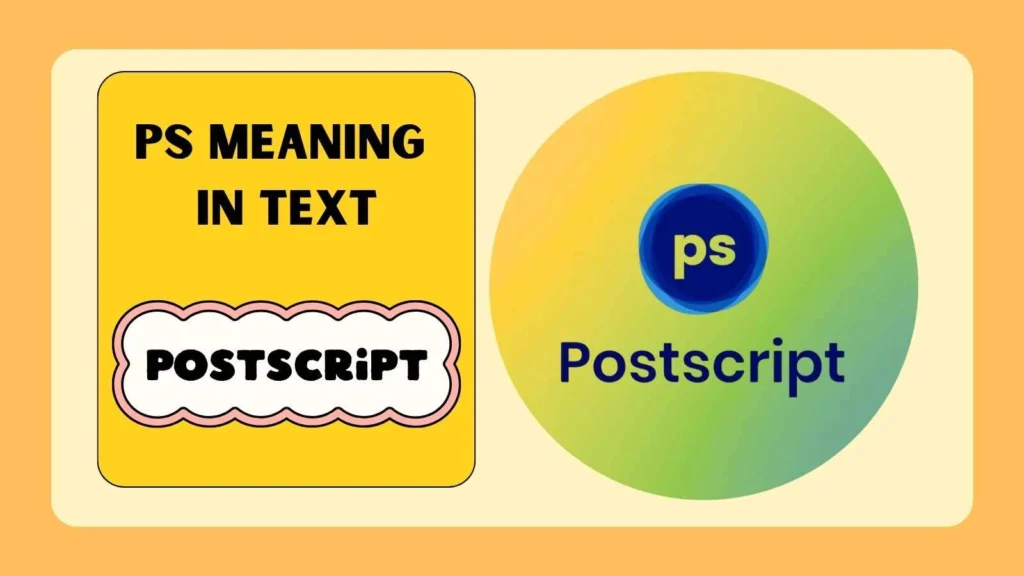If you’ve ever received a message or an email that ends with “PS,” you might have paused for a second, wondering what it really means. The abbreviation PS in text is one of those little add-ons that continues to spark curiosity.
People often search for its meaning because it shows up not only in personal letters but also in emails, chats, and even on social media posts. Despite being such a short phrase, it carries a lot of weight in communication.
Whether used casually to add an afterthought or as a way to emphasize something important, understanding this tiny term can make your messages clearer and more effective.
In this article, we’ll dive deep into the definition, history, uses, and misconceptions about PS, helping you use it confidently across different contexts.
Definition & Meaning
The abbreviation PS stands for “Postscript.” The term comes from the Latin phrase post scriptum, which translates to “written after.” In text, PS is used to add an additional thought, clarification, or reminder after the main message has been completed.
For example:
“Thanks for attending the meeting. PS: Don’t forget to send your report tomorrow.”
In texting and social media, PS still carries the same meaning. It allows people to share an extra note without rewriting the entire message.
Background & History
The origin of PS dates back to handwritten letters in the early centuries when people did not have the option to edit or retype their messages. If a writer forgot to include something, they simply added it at the end as a postscript.
With the invention of typewriters and later, digital communication, the use of PS continued. It became a stylistic device to grab attention, add humor, or emphasize an important point. Even in the digital era, PS maintains its charm as a way to connect with readers more personally.
Usage in Various Contexts
- Personal Texts & Chats: Used to add a playful or extra thought.
- Emails & Letters: Often included to highlight reminders, links, or additional requests.
- Marketing & Advertising: Brands use PS in promotional emails to make an irresistible final pitch.
- Social Media: Influencers add PS for witty remarks or bonus tips.
Its flexibility makes PS suitable for casual, creative, and professional settings.
Common Misconceptions & Clarifications
- Myth 1: PS is outdated.
Not true — it’s still actively used in emails, texts, and marketing. - Myth 2: PS is unprofessional.
While it’s casual, PS can still appear in professional communication if used sparingly. - Myth 3: PS means “please see.”
This is incorrect. Its only correct meaning is “postscript.”
Similar Terms & Alternatives
Some alternatives to PS include:
- NB (Nota Bene): A Latin term meaning “note well.”
- BTW (By the way): A texting abbreviation used similarly.
- FYI (For your information): Used to highlight additional information.
These alternatives work well depending on tone and audience.
How to Respond to This Term
If someone uses PS in text, the best way to respond is to acknowledge the additional note. For instance, if a friend writes:
“PS: Let’s grab coffee tomorrow!”
You can reply: “Sure, sounds great!”
The key is to treat the PS as part of the main message.
Regional or Cultural Differences
While PS meaning in text is universal, its frequency varies:
- Western countries: Often used in formal letters and marketing emails.
- Asian regions: Less common, but understood in academic and professional contexts.
- Digital-native cultures (Gen Z & Millennials): Used in playful or witty texts, often to create suspense or humor.
Comparison with Similar Terms
- PS vs BTW: PS usually appears at the end of a text, while BTW fits naturally in the middle.
- PS vs NB: PS is casual, NB is more formal and academic.
- PS vs Add-ons (like “oh by the way”): PS adds charm and emphasis, while others sound straightforward.
Usage in Online Communities & Dating Apps
On platforms like Reddit, Instagram, or dating apps, PS is often used for a lighthearted afterthought:
- “Had a great time today. PS: You owe me dessert next time 😏.”
This playful tone helps build rapport and keeps the conversation fun.
Hidden or Offensive Meanings
Unlike other slang terms, PS meaning in text is not offensive. However, some confuse it with other acronyms. For example, in gaming communities, PS might be mistaken for PlayStation. Always check the context before interpreting.
Suitability for Professional Communication
In professional emails, PS can be effective if used carefully. Many marketers add a PS line at the end to reinforce a call-to-action, such as:
“PS: Don’t miss our upcoming webinar this Friday.”
This makes the message more memorable without overwhelming the reader.
FAQs
What does PS mean in text?
It stands for “Postscript,” meaning “written after.”
Is PS still used today?
Yes, it’s common in emails, marketing, and even casual texting.
Can I use PS in formal emails?
Yes, but use it sparingly and only for emphasis.
Does PS have any hidden slang meanings?
Not really — most people recognize it as “postscript.”
Is PS the same as BTW?
No, PS appears at the end, while BTW is inserted mid-sentence.
Do younger generations use PS in texting?
Yes, often in a playful or humorous way.
Conclusion
The abbreviation PS in text may be small, but its impact is undeniable. From handwritten letters to digital chats, it has stood the test of time as a way to add charm, emphasis, or an important afterthought.
Whether you’re crafting a personal message, sending a professional email, or simply dropping a witty remark on social media, PS gives you that perfect final touch.
By understanding its history, usage, and alternatives, you can use it confidently and avoid common misconceptions.
